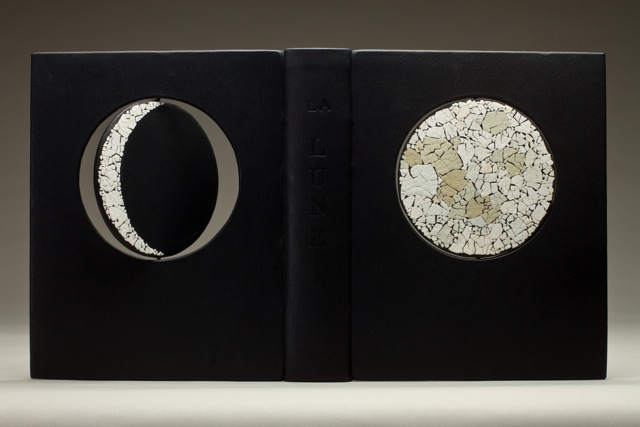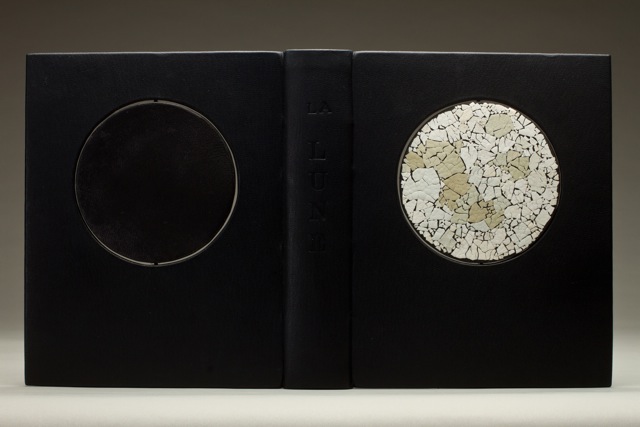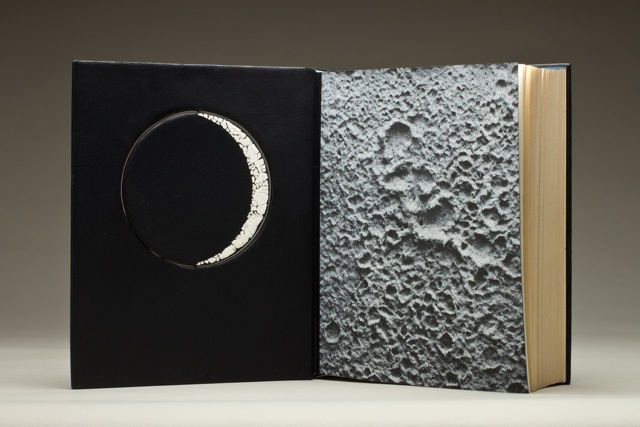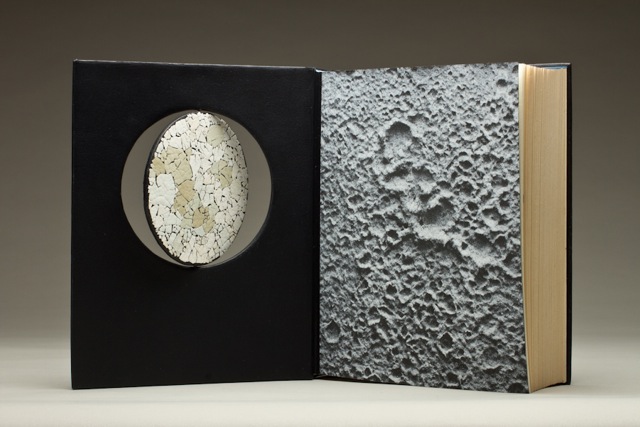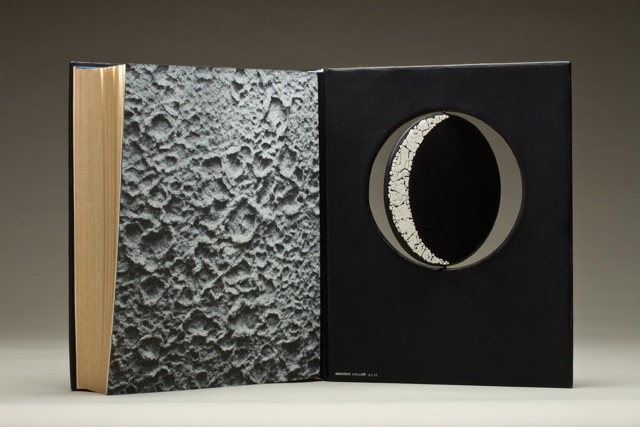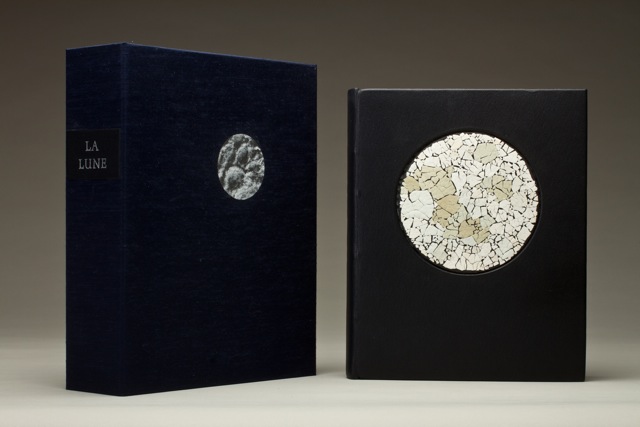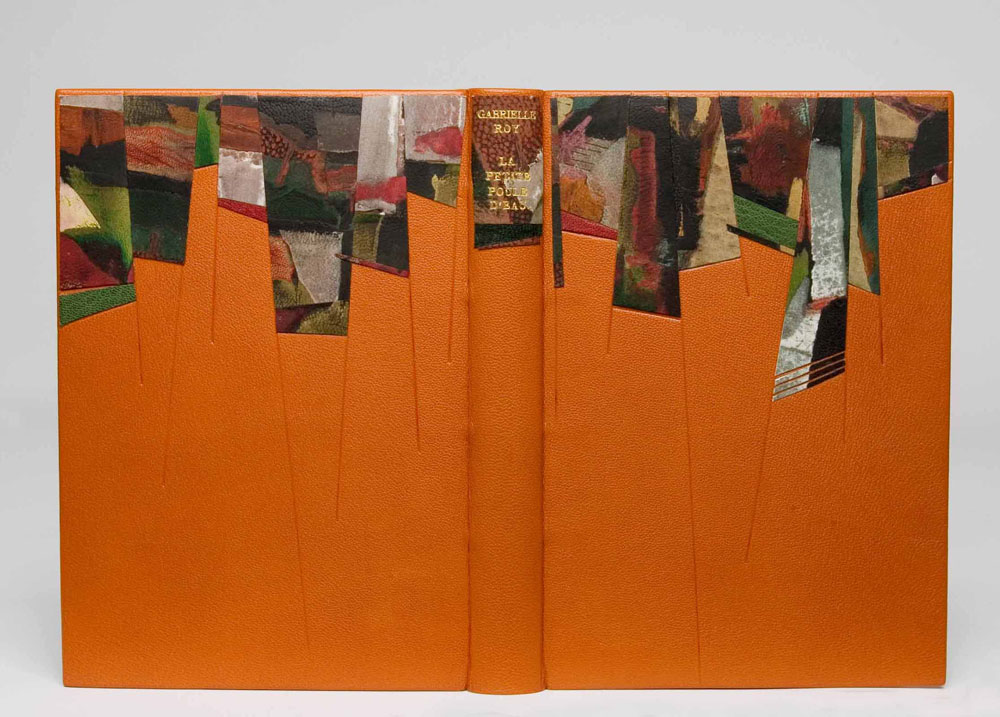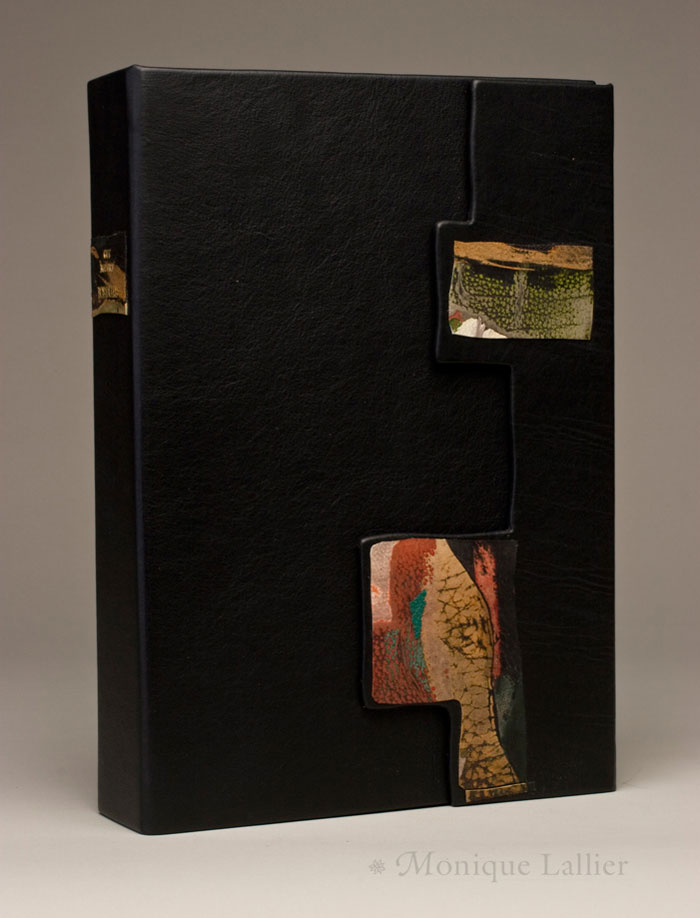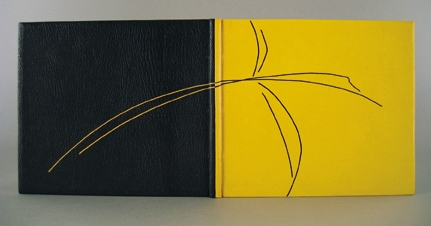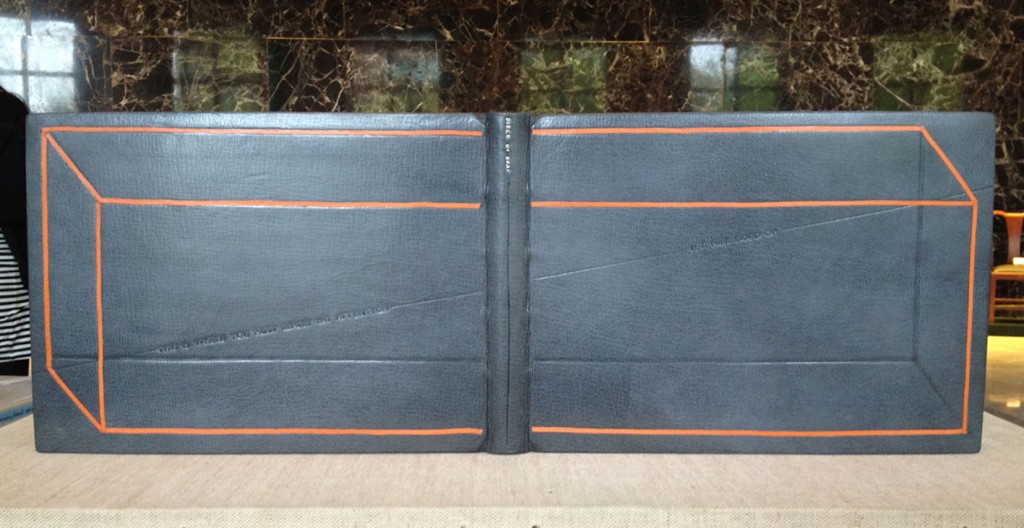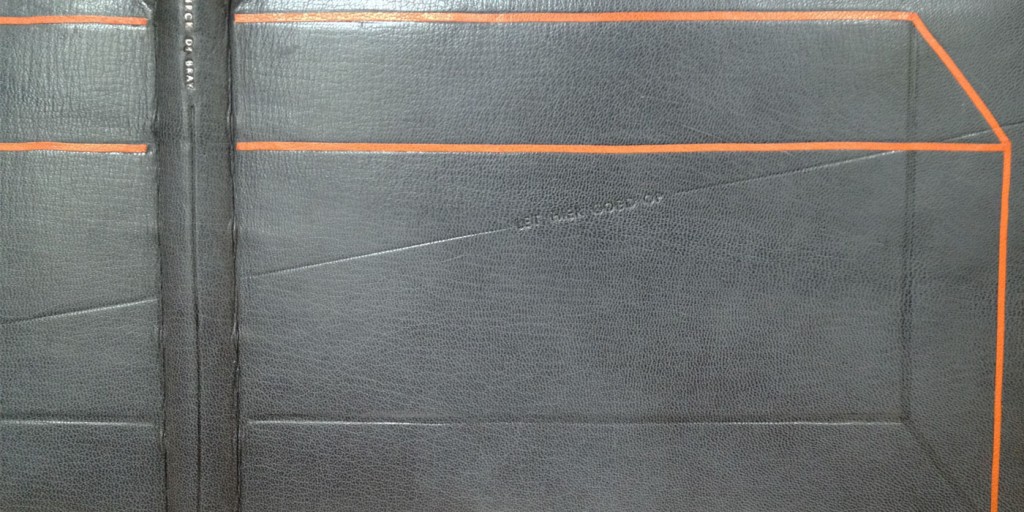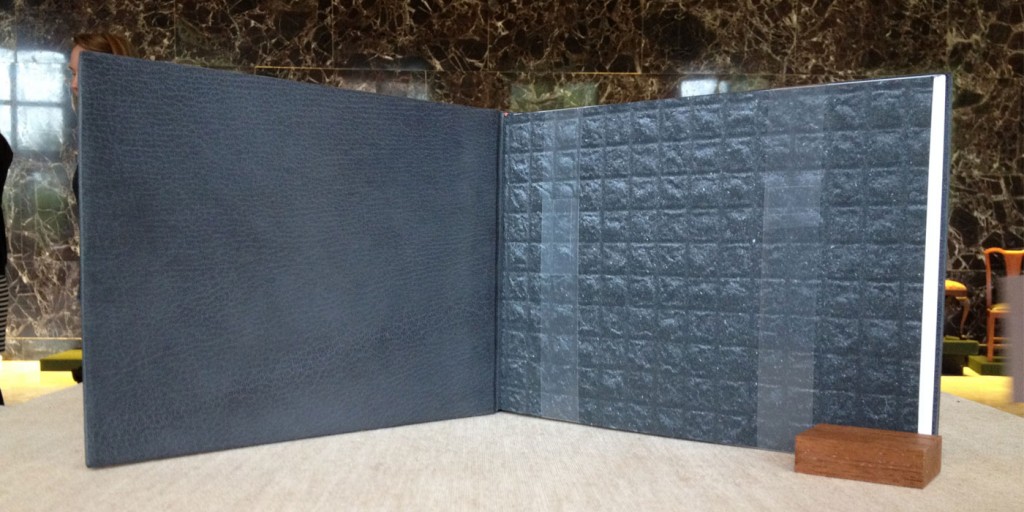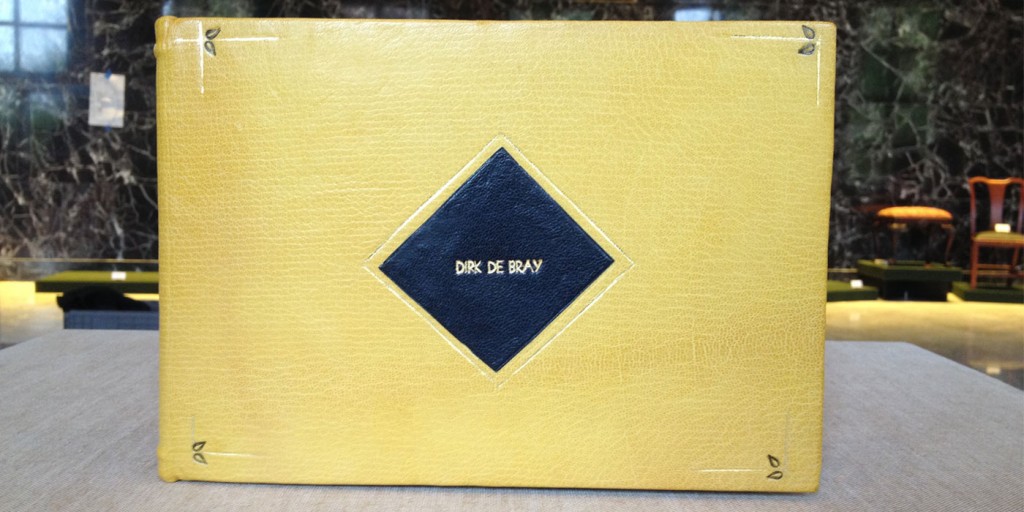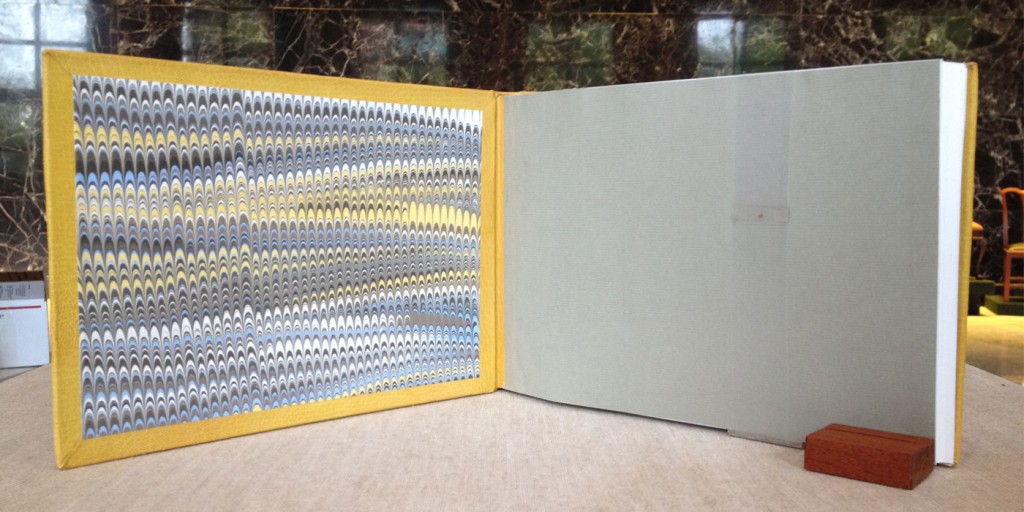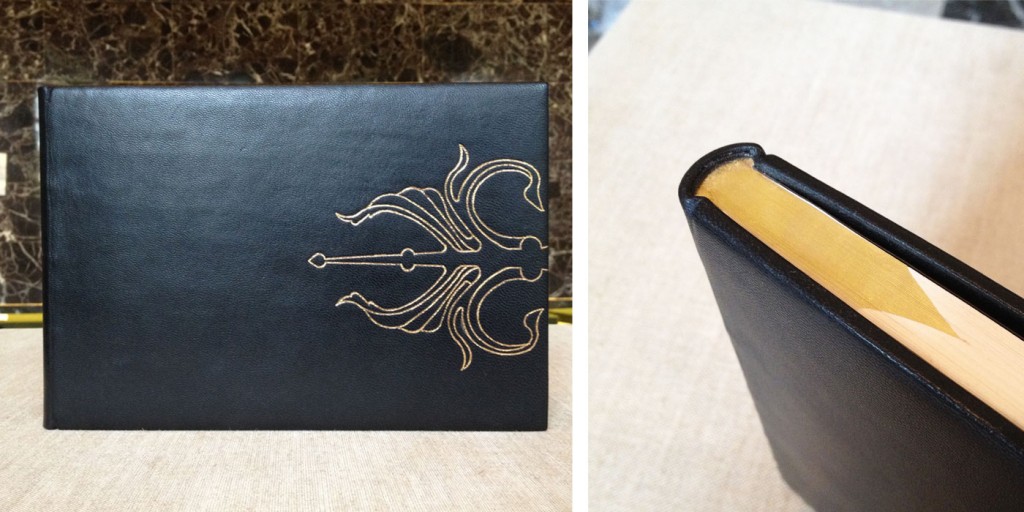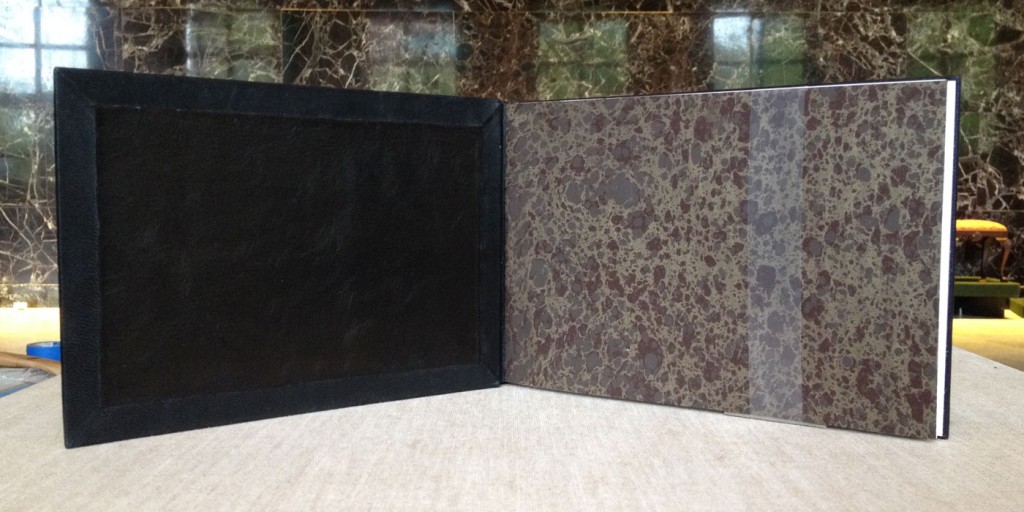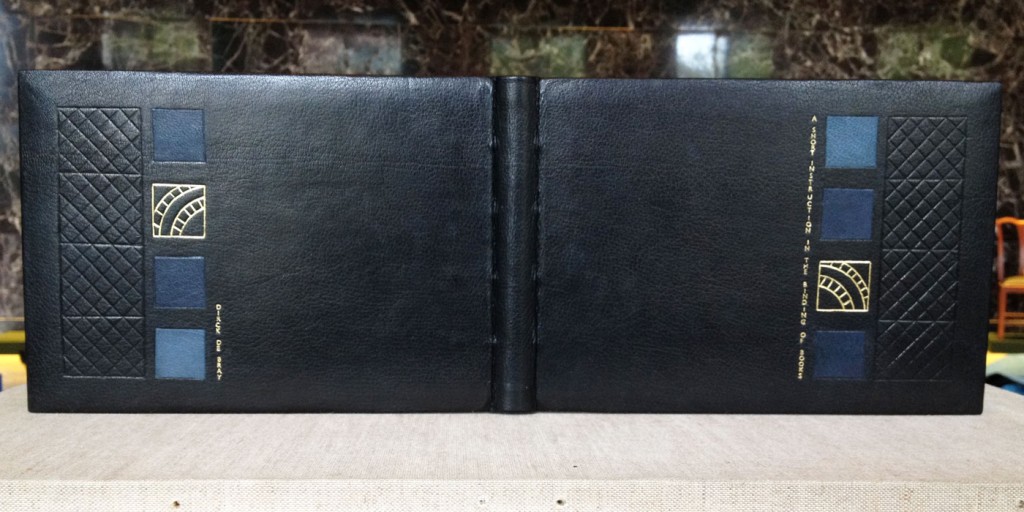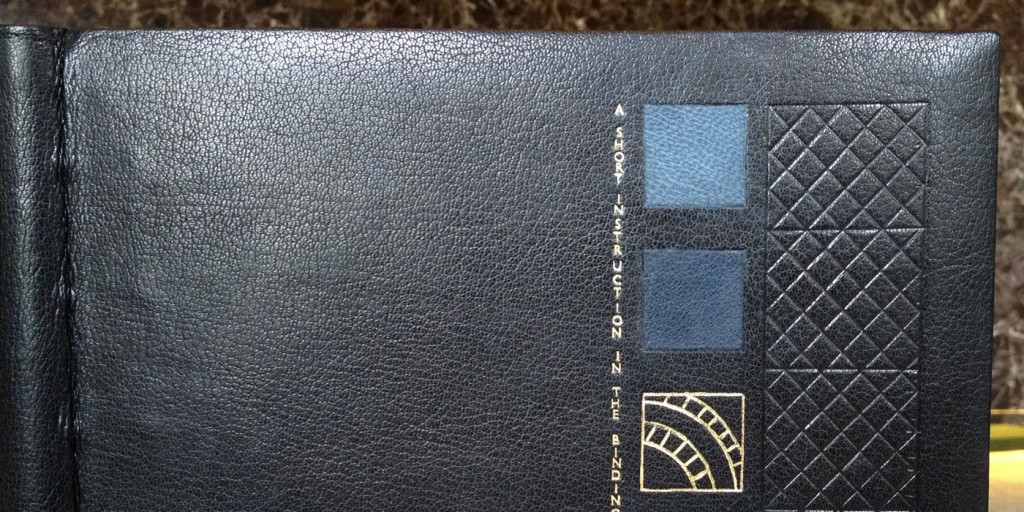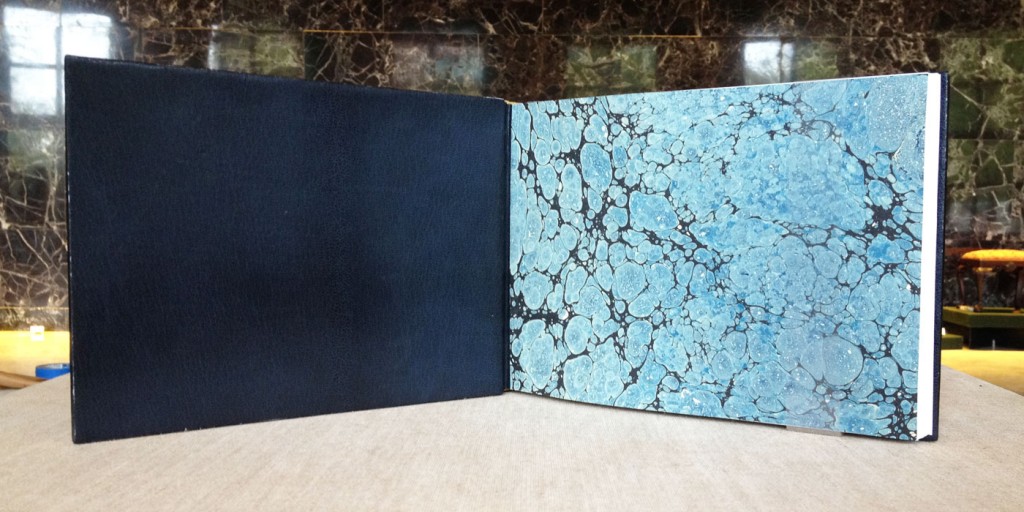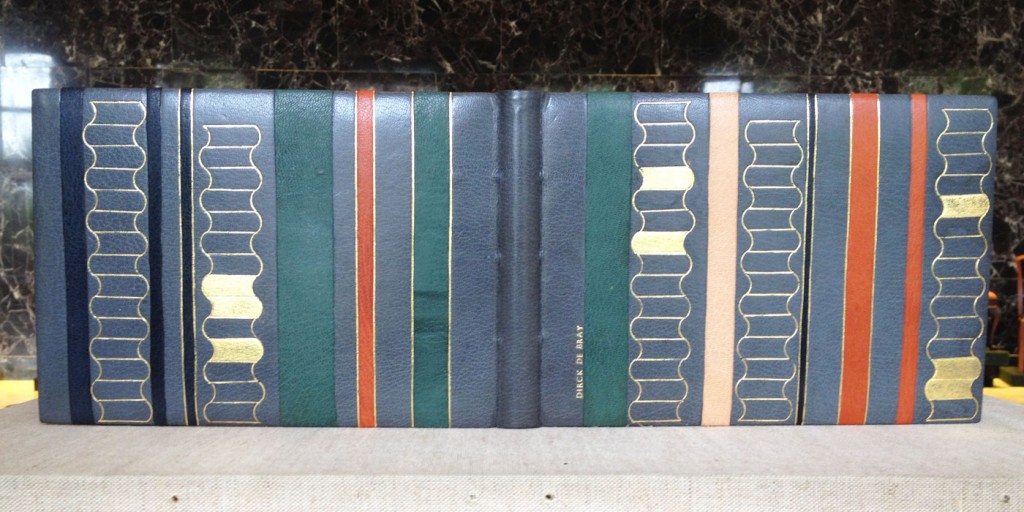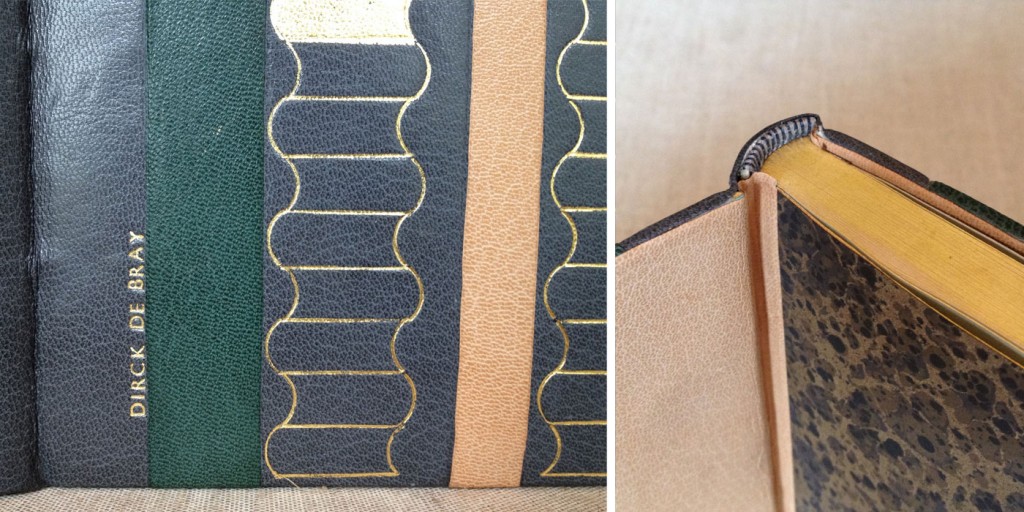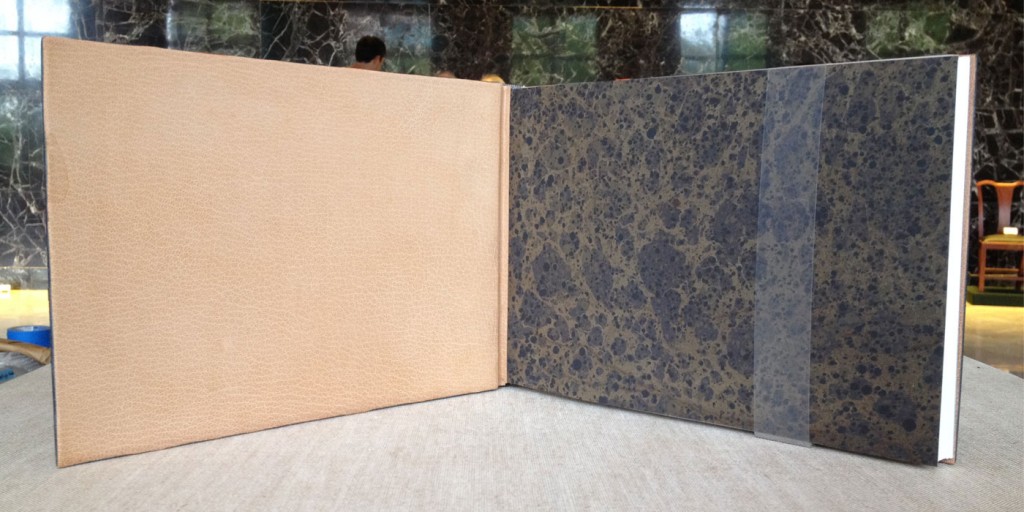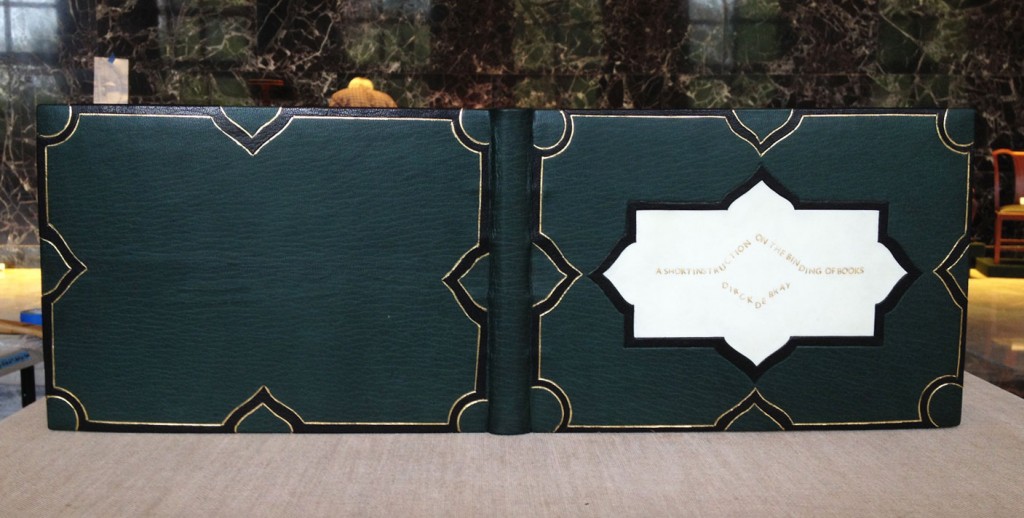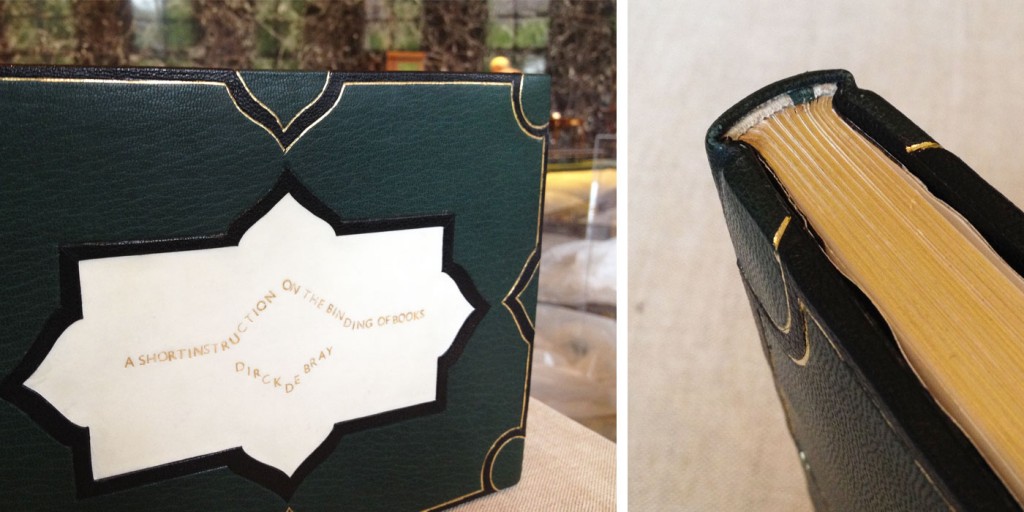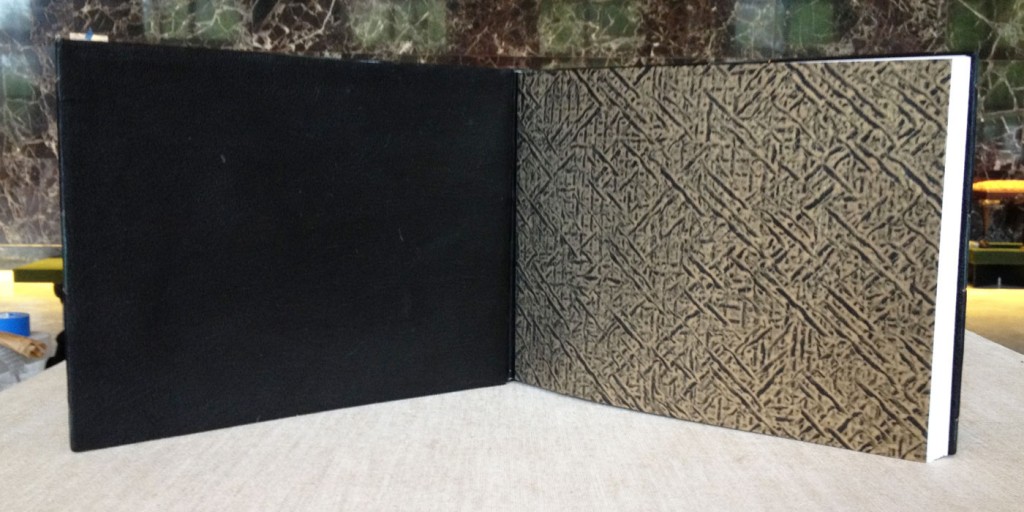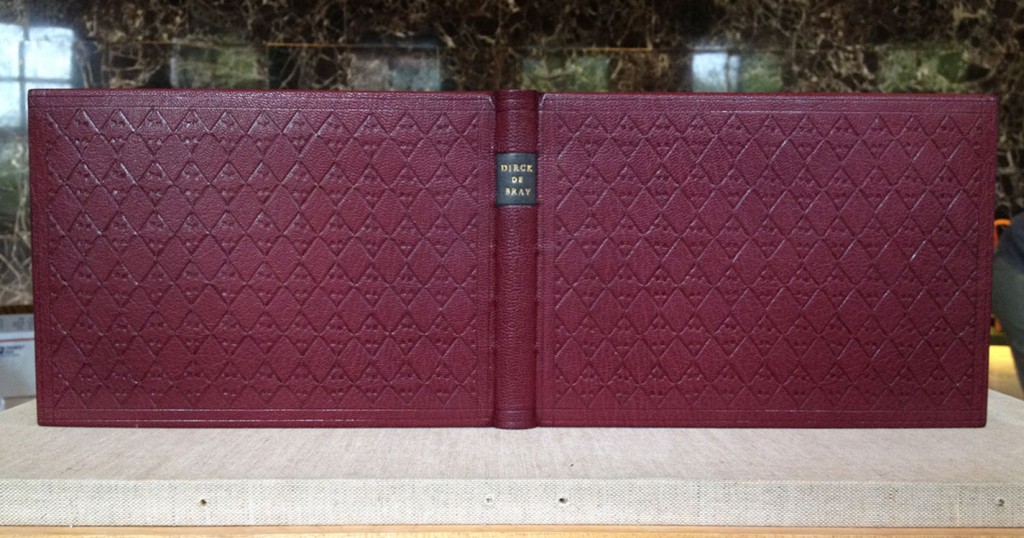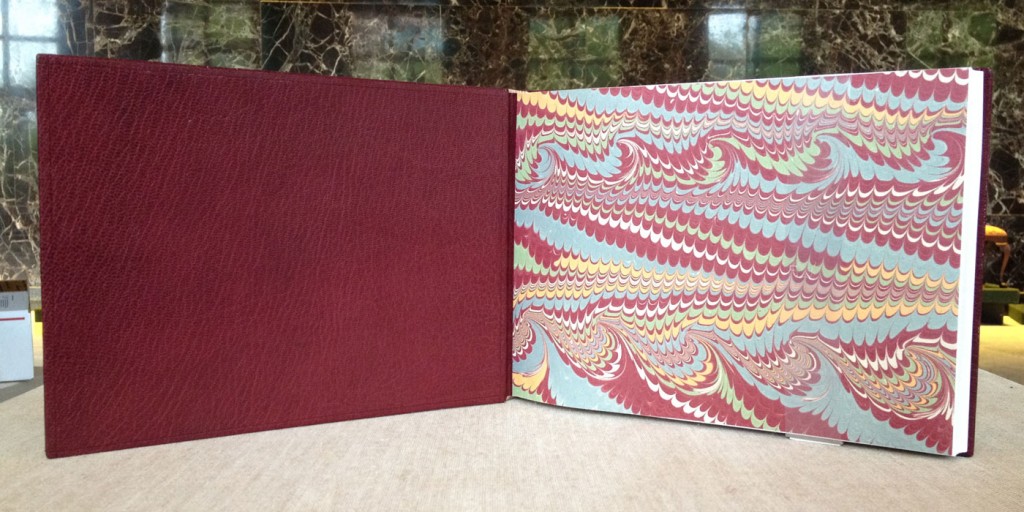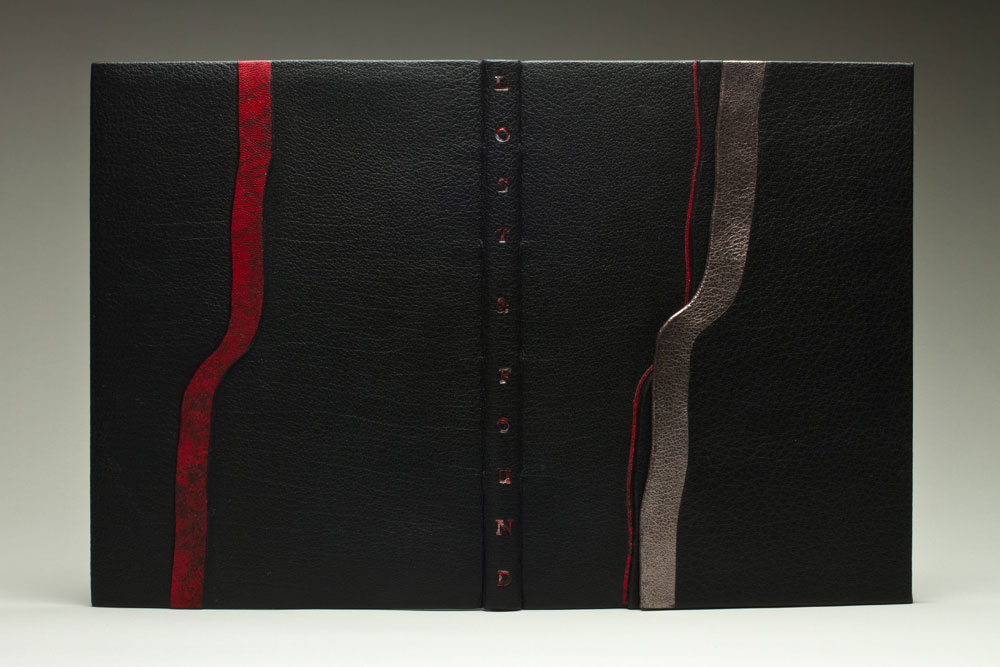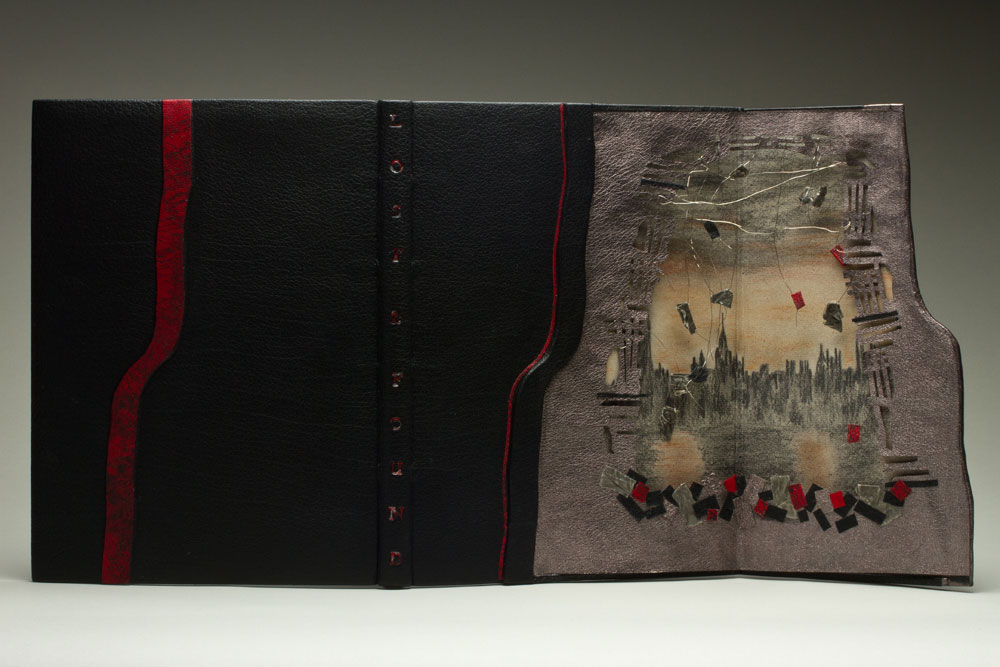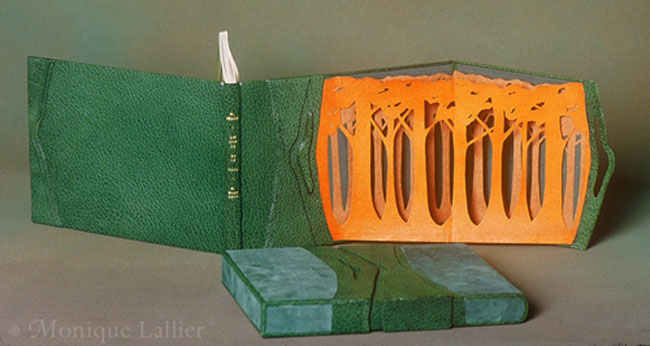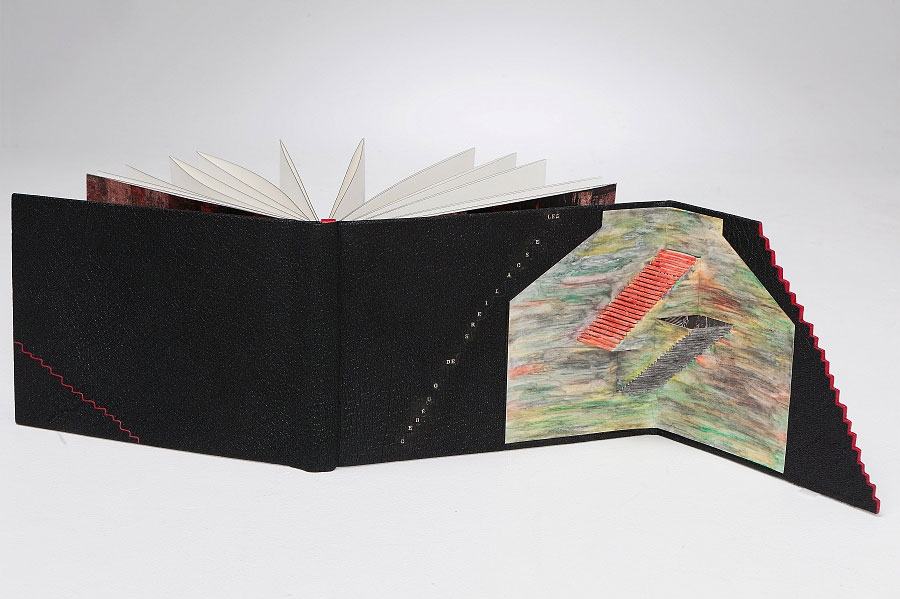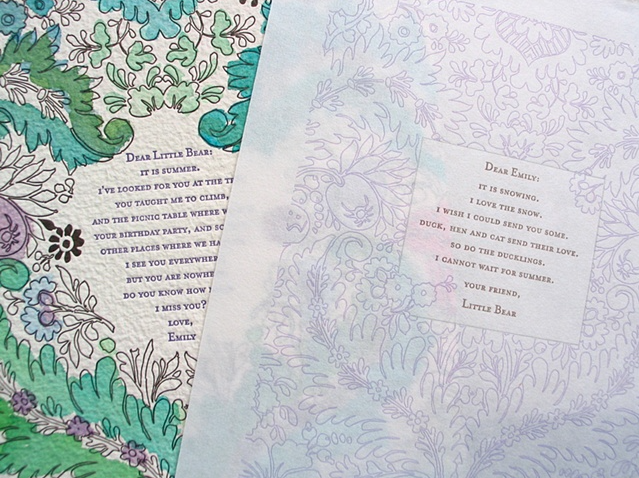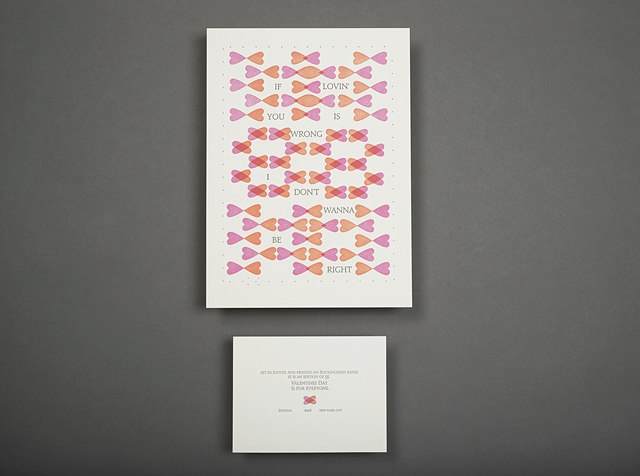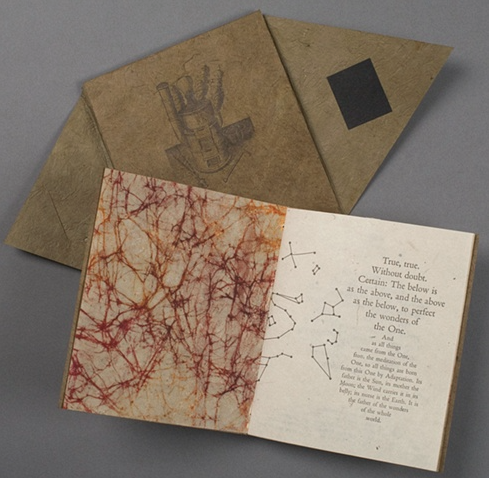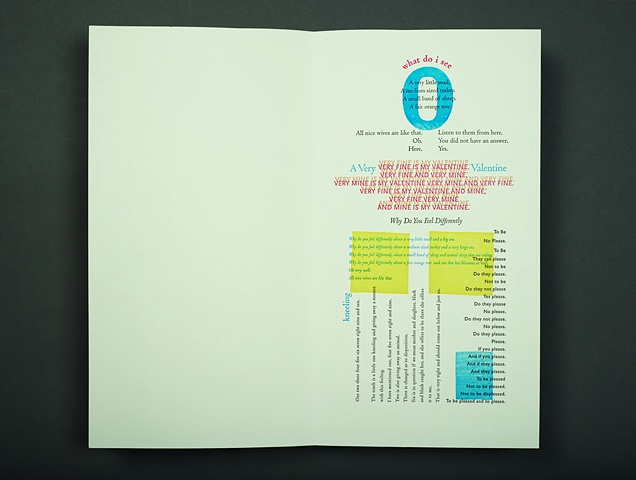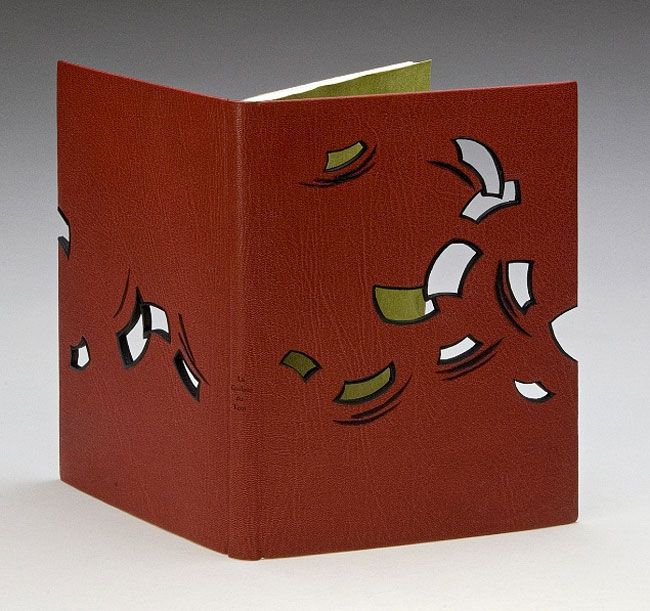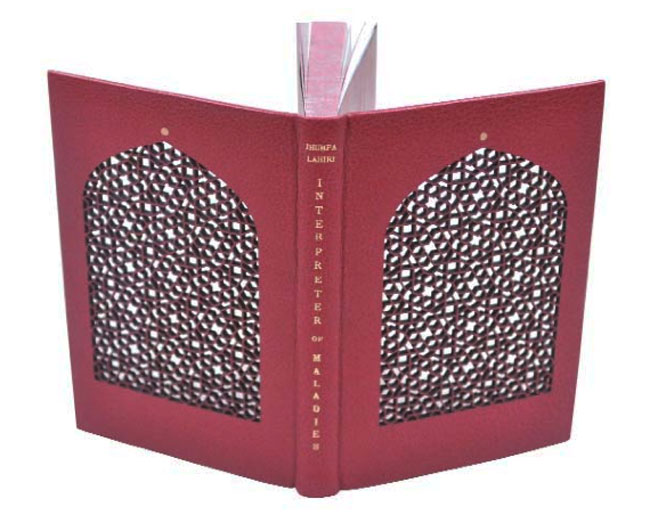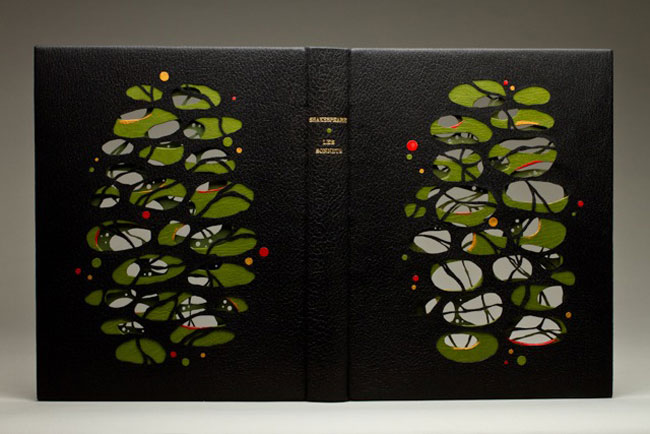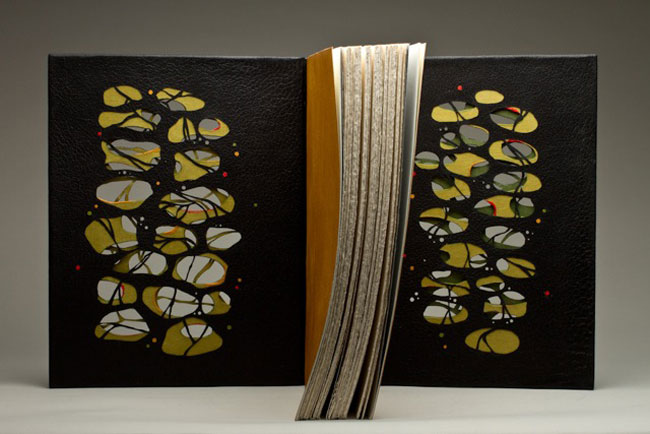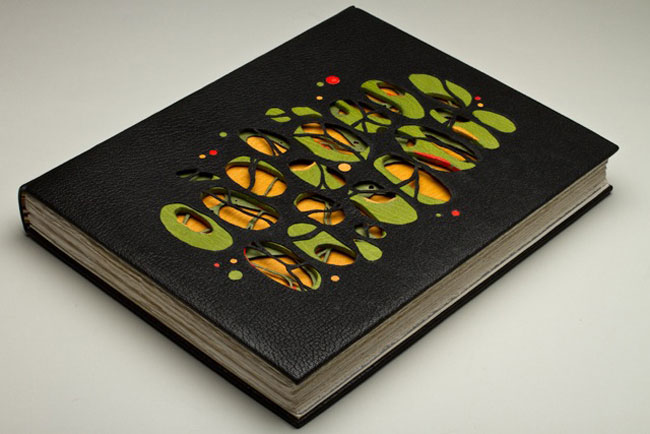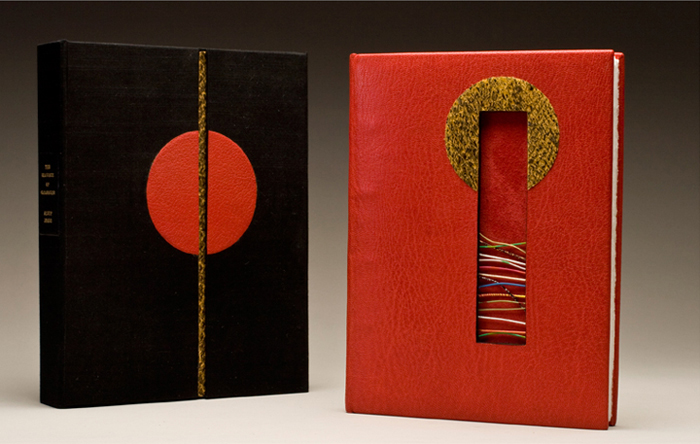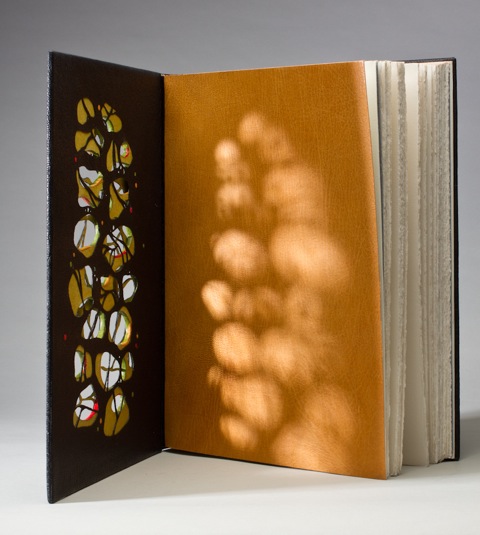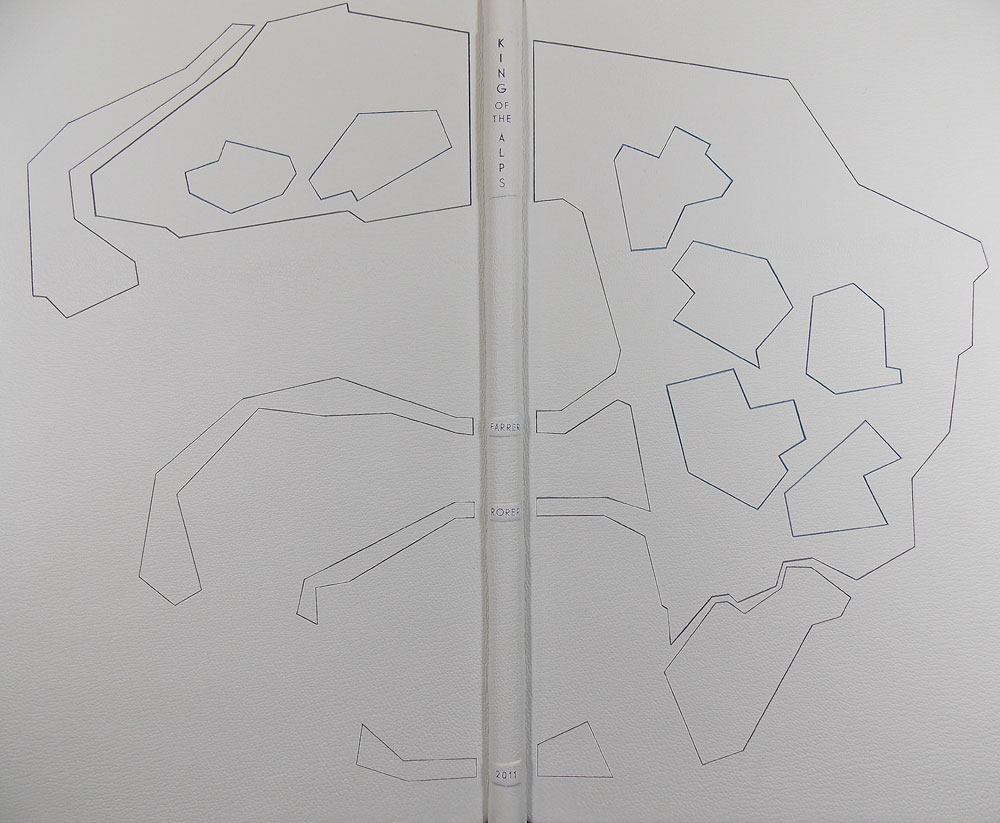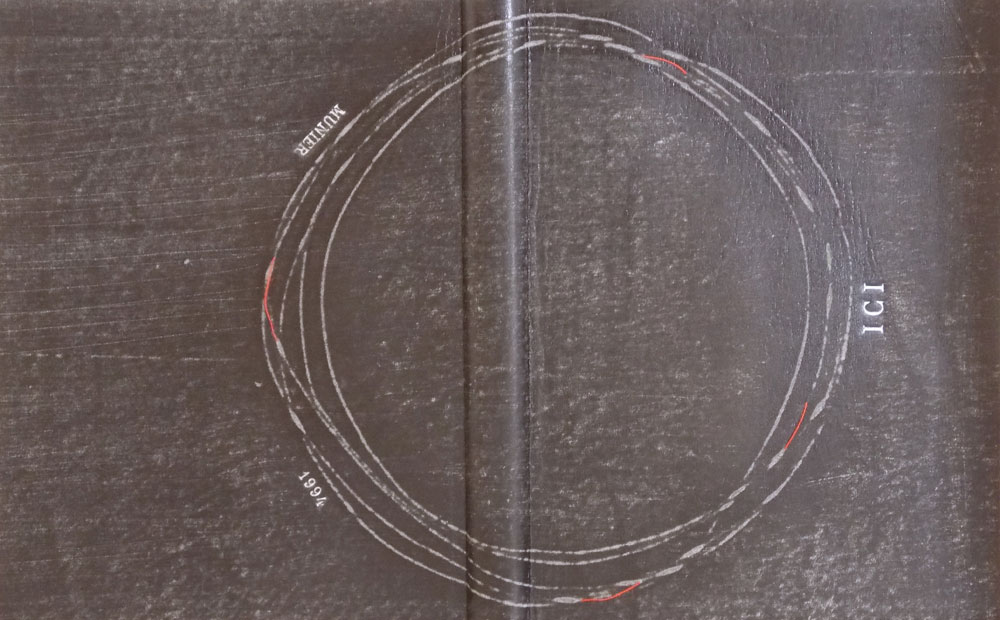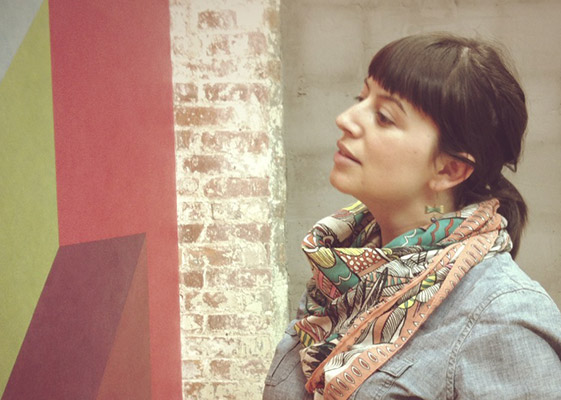As much as I would like to feature every single binding from Monique Lallier’s portfolio, the month as finally come to an end. But I thought I’d sneak in one last binding to leave you in awe.
La Lune was recently bound by Monique using dark blue smooth goatskin from Steven Siegel with matching edge to edge doublures. The endpapers perfectly match the design and title of the book. The ‘moon’ paper came from Andrea Peterson of Hook Pottery Paper.
Throughout the month we’ve looked at your hidden panel bindings which offer a distinct element to your work and unique movement to the structure. We’ve also looked at bindings that include depth and texture through the use of laser cutting or lacunose. With the binding for La Lune you really bring together movement and texture in such a brilliant and unique way. What can you tell us about the concept for the binding and how the rotation of the moon was constructed?
La Lune was a commission from an artist friend. I wanted to have texture for the full moon so I choose egg shells of different tones of blue to white. The crescent are of white shells, the new moon is of black vellum that has some gray tone in it. I had the circles laser cut. I cut a channel in each circle for the metal rod and put it in place before covering. From the inside of the boards I cut another channel, longer at the top than the bottom one so I could push the rod up until I could adjust it in the bottom channel. The rod has to stay free to allow the rotation.
